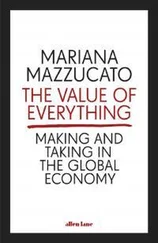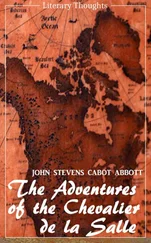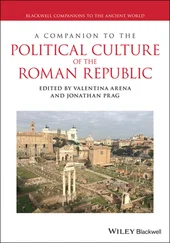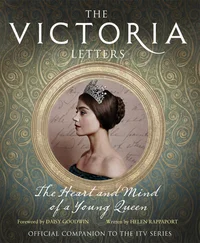A Companion to the Global Renaissance
Здесь есть возможность читать онлайн «A Companion to the Global Renaissance» — ознакомительный отрывок электронной книги совершенно бесплатно, а после прочтения отрывка купить полную версию. В некоторых случаях можно слушать аудио, скачать через торрент в формате fb2 и присутствует краткое содержание. Жанр: unrecognised, на английском языке. Описание произведения, (предисловие) а так же отзывы посетителей доступны на портале библиотеки ЛибКат.
- Название:A Companion to the Global Renaissance
- Автор:
- Жанр:
- Год:неизвестен
- ISBN:нет данных
- Рейтинг книги:5 / 5. Голосов: 1
-
Избранное:Добавить в избранное
- Отзывы:
-
Ваша оценка:
- 100
- 1
- 2
- 3
- 4
- 5
A Companion to the Global Renaissance: краткое содержание, описание и аннотация
Предлагаем к чтению аннотацию, описание, краткое содержание или предисловие (зависит от того, что написал сам автор книги «A Companion to the Global Renaissance»). Если вы не нашли необходимую информацию о книге — напишите в комментариях, мы постараемся отыскать её.
An innovative collection of original essays providing an expansive picture of globalization across the early modern world, now in its second edition A Companion to the Global Renaissance: Literature and Culture in the Era of Expansion, 1500–1700, Second Edition
Companion’s
A Companion to the Global Renaissance
cum
A Companion to the Global Renaissance: Literature and Culture in the Era of Expansion, 1500–1700, Second Edition
A Companion to the Global Renaissance — читать онлайн ознакомительный отрывок
Ниже представлен текст книги, разбитый по страницам. Система сохранения места последней прочитанной страницы, позволяет с удобством читать онлайн бесплатно книгу «A Companion to the Global Renaissance», без необходимости каждый раз заново искать на чём Вы остановились. Поставьте закладку, и сможете в любой момент перейти на страницу, на которой закончили чтение.
Интервал:
Закладка:
John Michael Archer
The two parts of Christopher Marlowe’s Tamburlaine the Great form an epic of global, if not cosmic, scale. Tamburlaine’s conquering journey from central Asia through Persia to Turkey implies in its ambition and the rhetoric that attends it an even grander circuit. Marlowe’s language ranges from Northern Europe to the Antarctic and West to the Americas and from the heavens to the elements of the human body and their dissolution in hellish images of combustion and darkness. Yet, as drama, the plays must also confront the impossibility of representing such an epic itinerary on stage within the largely visual medium of theater. 1In a sense, they already embody the paradox of what Martin Heidegger named the “Age of the World Picture,” a modernity that is at once visual and nonvisual because it features not “a picture of the world but the world conceived and grasped as picture” (Heidegger, 129). A world-picture is an idea or conceptual framing of existence as an image in which the subject has become immersed. The paper that follows brings together two different approaches to Marlowe’s world-picture and its limits. The first section reviews the overtly visual influence of contemporary projects to map the world on his epic drama; the second questions the extent to which Islam was represented within the human geography of the world pictured on the early modern English stage. As I shall show, Marlowe, surprisingly, cites Muslim strictures on the image while drawing on the Qur’an itself for his cosmography, yet his view of Islam remains, perhaps inevitably, a distorted one. Islam’s ultimate absence from the life-world of Tamburlaine the Great suggests that religious belief itself remains recalcitrant before the modern world-picture and its array of easily marked subjects or identities.
I The Orbicular Renaissance
The world-picture of the Tamburlainiad is first of all a product of mapping. Contemplating the destruction of Damascus in Part I, Tamburlaine proposes to make it “the point/That shall begin the perpendicular” in a new division of the geographical field (Marlowe, Tamburlaine I: 4.4.83–84). It is necessary to quote once more a passage that has so often inaugurated discussions of Marlowe and cartography. Tamburlaine speaks:
I will confute those blind geographers
That make a triple region in the world,
Excluding regions which I mean to trace,
And with this pen reduce them to a map,
Calling the provinces, cities, and towns
After my name and thine, Zenocrate.
(lines 76–82)
Damascus is the first place to be reduced and reinscribed by the conqueror’s sword. As John Gillies argues, it will both usurp the role of Jerusalem as predetermined central “point” of the three-continent earth on a traditional T-in-O mappamundi and mark the “perpendicular” or initial meridian of longitude on the detailed fifteenth-century world map derived from Ptolemy that replaced the medieval model. The contradiction between Damascus as new sacred center and as arbitrary point on a grid exposes the self-deluding violence of conquest (Gillies, 56–57). The palimpsest of two successive stages in world mapping that Tamburlaine’s words suggest is moreover difficult to visualize beyond the screen of language. Earlier geographers were “blind,” presumably for occluding namable features in their three-part schematic of the earth as well as for excluding Tamburlaine’s anachronistic glimpse of undiscovered regions like the Americas. Tamburlaine, however, cannot propose a proper alignment among mapping, the visual, and the sacred – perhaps because such an alignment does not exist.
Before and after the Damascus moment, a third stage in the project of world mapping traces a covert way through the texts of Tamburlaine Parts I and II. The scholar Ethel Seaton and later editors have demonstrated that Marlowe wrote from a map or rather, from what I will call a world map book , Abraham Ortelius’s Theatrum Orbis Terrarum of 1570 (Seaton, “Marlowe’s Map”). Ortelius’s volume contains a world map and maps of world regions, like the map of Africa that lies behind the lengthy description by Techelles of his route of conquest on Tamburlaine’s behalf (II: 1.3.186–205). Signs of Ortelius’s visual influence on Marlowe’s language are present from the start of Part I (e.g. I: 1.2.162–169, 103 and notes). Marlowe’s misreading of labels in the world map book unknowingly creates an imaginary geography at times, condensing Romania and Rome, for instance, or taking Passera for Balsera and placing it in Turkey (II: 2.1.9, 3.3.3 and notes). Textual error is as arbitrary a tyrant as Tamburlaine, reducing and renaming territory on an invisible map, or collection of maps. It is only at the very end of the second play, when Tamburlaine enters, dying, in his chariot, that the map is made visible at his command, as a stage property. It appears indeed to be the world map included in Ortelius’s collection, for Tamburlaine enumerates unconquered regions moving across the Atlantic from just west of the African coast at the Tropic of Cancer (II: 5.3.126–160). This watery no-place, and not Damascus, formed the meridian at degree zero in the new cartography he now anticipates.
The title of Ortelius’s world map book lays down an itinerary through the visual realization of space that Marlowe also follows. Theatrum Orbis Terrarum : the earth, terra , is displayed in, but also simply is, a “theater.” It is conceived as a world-picture. Latin theatrum derives from a Greek verb for seeing. Here, the word denotes a space of dramatic representation as well as the general “Princes gallery or spacious Theater” for the mounting of large wall maps that Ortelius imagines in his preface (“[T]o the courteous Reader,” in Ortelius, n.p). But it is the term orbis that defines the sixteenth-century world-picture that Marlowe shared with Ortelius. The earth that is displayed is a “circle” or “disk,” not a “flat earth” as such but a projection of a round three-dimensional volume on a flat surface, or a series of such projections, region by region, in the world map book’s pages. Ptolemy’s accounts of projection had been rediscovered in the previous century with his influential world map, and long since applied by mapmakers to continents, countries, and cities. Projection makes the earth visible, but at the expense of distortion; regional maps are accurate, but they depend on the exclusion of the earth in its totality from the visual field. Both types of visual deficiency are evident in Ortelius’s world map book.
Mapmakers also fashioned globes, avoiding distortion by reproducing the earth’s features accurately on a spherical surface. But, as the cartographic theorist Christian Jacob points out, terrestrial globes entail visual problems of their own. If a globe is small, its geographical detail is hard to see and label; if large, “its giganticism exceeds the capacity of the synoptic gaze” (Jacob, 52). This is why the ideal geography lesson began with the globe but moved quickly to the manageable flat surfaces of charts and books. Jacob explains the advantage of Ortelius’s cumulative approach over other totalizing projects like globes and world maps. It is “suited to a different kind of mastery of the world, one that is more intellectual and encyclopedic … [and the] multiplicity of maps turns it into an archive in which all the geographical knowledge of a period may be recorded” (Jacob, 67). The viewer will never see the totality of the world; one can only hope to imagine it instead through reasoning about partial or distorted visual clues, valuable only in the aggregate and by means of a process. What Jacob calls the “logic of accumulation” behind the early modern world-picture was in place before Ortelius’s Theatrum Orbis Terrarum . Italian printers had long gathered loose maps and bound them into ad hoc codices for individual customers, now often called “Lafreri maps” by collectors after Antonio Lafreri, the best-known entrepreneur. Ortelius’s great advance was to render a collection relatively uniform and reproducible with his 1570 volume. Gerard Mercator went further. His Atlas , published in 1595, a year after his death (and two years after Marlowe’s murder), was a single-authored work in its original conception, although others’ maps were added to later editions (Jacob 67, 68–71). Like the African king Atlas who created the first celestial globe, Mercator, who cites this rationalization of the Atlas myth in his preface, lays claim as author to a form of perfect understanding through imperfect means and implicitly offers to help his audience navigate the faulty visual world as well (“Preface upon Atlas,” in Mercator, n.p).
Читать дальшеИнтервал:
Закладка:
Похожие книги на «A Companion to the Global Renaissance»
Представляем Вашему вниманию похожие книги на «A Companion to the Global Renaissance» списком для выбора. Мы отобрали схожую по названию и смыслу литературу в надежде предоставить читателям больше вариантов отыскать новые, интересные, ещё непрочитанные произведения.
Обсуждение, отзывы о книге «A Companion to the Global Renaissance» и просто собственные мнения читателей. Оставьте ваши комментарии, напишите, что Вы думаете о произведении, его смысле или главных героях. Укажите что конкретно понравилось, а что нет, и почему Вы так считаете.












